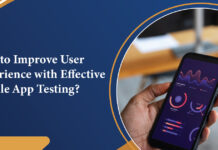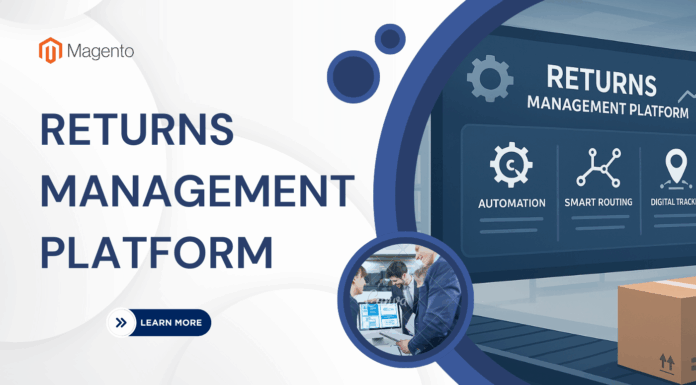
Artificial Intelligence in the information age is revolutionizing business processes. Already valued at $196 billion, it is expected to grow 13x by 2030. Moreover, a survey revealed that over one-third of the companies surveyed already started using AI to automate basic tasks.
At this point, adopting AI is as much about surviving as getting a competitive advantage. And this is where an AI App comes in. AI-powered mobile or web applications help you automate business processes and streamline operations.
Through different features, AI applications can help employees, executives as well as customers. In this blog, we’ll discuss how to build an AI app, some of the benefits of AI apps, the industries where they’re making a difference, and how AI development companies develop their AI apps.
Ready to enter the era of AI?
Let’s get started!
Table of Contents
I. How Can AI Boost Your App Revenue?

In today’s world, AI is omnipresent. From crawling through websites to rank them for our searches to powering automatic cars. And companies of all kinds have very good reasons for deploying AI-powered apps and tools. Here are some of the most important benefits of AI.
1.1. Supercharge Productivity
AI can help us automate rules-based tasks, discover patterns in complex data and learn from human behavior. Thus, it frees employees to focus on tasks requiring a human touch. It also helps enterprises gain insights into business data and eliminate clutter from their processes.
1.2. Retain Customers, Increase Revenue
By giving customers cutting-edge experiences, including chatbots and hyper-personalized suggestions, you can reach more customers like never before. AI thus helps increase the return on advertising and customer experience budgets.
1.3. Streamline Business Operations
Lastly, AI helps enterprises integrate workflows, automate processes and unlock a different level of operational efficiency. For instance, an AI chatbot that ensures customer satisfaction can turn CRM into marketing and, eventually, another sale.
II. Common Use Cases of AI

2.1. Chatbots
Chatbots can help businesses automate customer-facing services and free up valuable human resources. They can accomplish a diverse range of tasks. They can be omnipotent chatbots in Chat-GPT style. Alternatively, you can build a limited model designed to help users track, place or cancel orders.
2.2. HR Onboarding and Recruitment
Have a thousand CVs to go through for one position at your firm? Need to understand the reasons behind a high attrition rate? Wasting too much time manually onboarding employees? AI can help with all these tasks by helping you understand HR patterns, set up onboarding protocols and sifting through thousands of CVs in no time.
2.3. Invoicing, Refunds and Reconciliation
Losing too much time raising invoices? Slow refunds frustrating customers? Reconciliation too clunky? Not anymore! AI is here to empower you to meet complex challenges, from compliance to user satisfaction.
These are just some of how AI features can massively improve your mobile apps. AI can also help you craft mobile apps through which users can track inventory, manage supply chains, generate travel itineraries and more!
III. How to Build an AI App from Scratch : Step-by-Step Guide
So, how can you create your own dazzling AI-powered application? Here’s a roadmap to help you craft a winning AI app.
3.1. Assess Existing Operations
Three questions can help you assess your existing operations. Which processes are central to your business logic? This could be itinerary building and asset listing if you’re a travel company. If you’re an aspiring e-commerce giant, this can be inventory tracking and hyper-personalization.
Second, what processes can be automated in the easiest possible way? Is it CRM? Or perhaps inventory management?
Third, automating which processes will yield the maximum return on investment? This could be HR onboarding, generative itineraries, customer support or a process unique to your business.
These questions will help you answer what your AI-powered app should look like and what features it must possess.
3.2. Choose an Appropriate AI Model
Next, it’s time to choose from a wide range of AI models to build your apps. Some of the most prominent ones include:
- Machine Learning Model: This model consists of algorithms that help you learn from data and make appropriate predictions. It does not need to be programmed for pre-programmed tasks.
- Deep Learning Model: This model helps you learn from unstructured data rather than structured data. Thus, deep learning can be used to analyze and respond to images. For instance, ecommerce giants can develop image-search capabilities with DL.
- Robotics Model: This model involves considerable financial investment but yields equally high returns as it can automate huge processes for different businesses. Automated trucks for logistics companies are an example of this.
- Nature Language Processing Model: Through NLP, you can create tools capable of responding to human language. A chatbot is an example of an NLP-based model.
- Expert Systems Model: An ES helps you mimic human decision capabilities. It is one of the most common and widely used AI models.

3.3. Prepare Structure/Unstructured Data
After selecting your AI model, it’s time to do the heavy lifting. Prepare the requisite data on which your AI model can be based or trained.
The smoother the data preparation, the easier and faster the learning or training process.
3.4. Select the Right Tools, Models and Frameworks
Another vital step is selecting the appropriate tools and frameworks, which are the backbone of your AI app.
Some of the most popular frameworks for AI development include TensorFlow, Keras, PyTorch and others.
Ideally, you should select a framework that enjoys current popularity and holds future potential.
3.6. Create an MVP or PoC
The last step before developing your model is to create a minimum viable product or proof of concept. This step is extremely important to the process of AI app development.
This is where your AI app will encounter bugs and glitches, as well as reveal its limitations and challenges.
3.7. Develop and Train the Model
Once your MVP succeeds, it’s time to get busy developing or training your model. This can take anywhere from one to six months. The time required will depend on the complexity of the model, the desired outcome and the competence of the personnel involved.
Ensure that your team is equipped to accomplish your desired outcome.

3.8. Deploy and Iterate
And that’s it! Once your AI app is out of the development phase, it’s time to introduce your cutting-edge innovation to its users.
To ensure smooth integration, provide users (whether employees or customers) with instructions on how to properly use it to harness its power and features.
And don’t forget to keep monitoring the app for bugs! Constant iteration is a hallmark of good AI development.
IV. Build Your AI App Today – Conclusion
So, now that you understand why and how an AI app is one of the best investments you could make in your business, it’s time to convert your imagination into reality.
But how can you do that?
Work with an outsourcing company! Through expert AI development services, they help you translate your vision into a concrete, tangible AI App.
Their development approach brings together expert AI personnel, industry-specific solutions, years of AI experience and a desire to help you enter the age of AI.
Let’s leverage the world of AI and craft the perfect AI app to revolutionize your enterprise
- 1. Golden Guide For Mobile App Gamification In 2024
- 3. Mobile Apps and PWAs: A Comprehensive Comparison To Unlock Your Store Potential In 2024












![[SALE OFF] Discount 30% All Premium Extensions On Christmas And New Year 2025 christmas-and-new-year-2025](https://landofcoder.b-cdn.net/wp-content/uploads/2024/12/christmas-and-new-year-2025-1-218x150.png)






